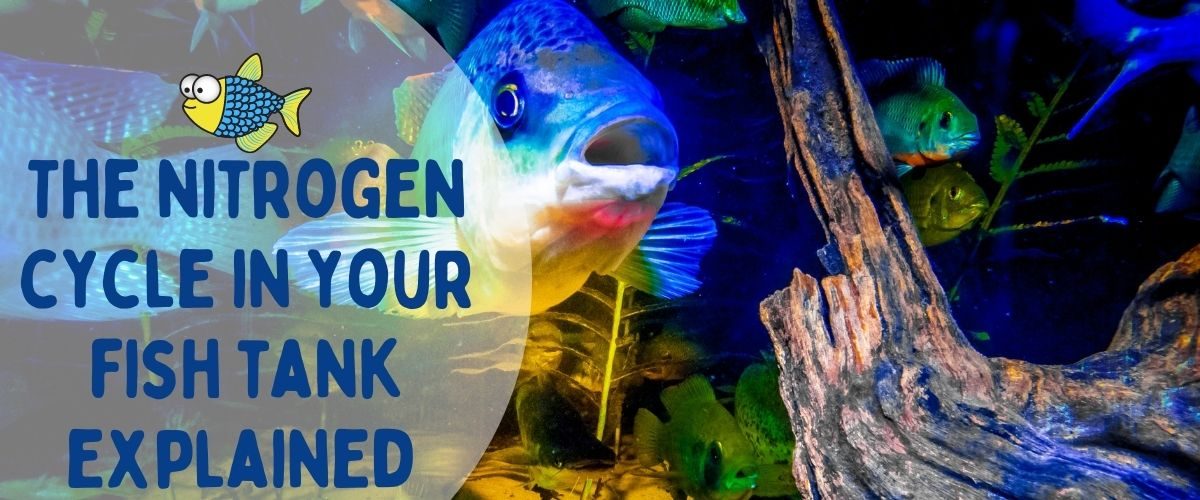As fish tanks are closed environments, ammonia, nitrites, and nitrates collect in the water and can cause fish diseases. Although these compounds build up in all fish tanks as part of the nitrogen cycle, overcrowding and overfeeding your fish can cause a particularly large build-up of compounds that contain nitrogen. So, how can you keep your fish healthy and limit the ammonia, nitrites, and nitrates in your tank?
Here, we’ll explain how the nitrogen cycle works and explain how to keep nitrates down with a good filtration system.

What is the nitrogen cycle?
Outside of fish tanks, the nitrogen cycle is the process of nitrogen moving from the air to plants, then animals, then bacteria, and then back to air. Although this system doesn’t need human intervention in the outside world, the cycle works differently in the confines of a fish tank. This is because nitrates convert into harmless nitrogen gas in open spaces. But this doesn’t happen in fish tanks, so partial water changes are essential.
The three stages of the nitrogen cycle
In a fish tank, the nitrogen cycle is a biochemical mechanism that causes the ongoing degradation of nitrogenous compounds like ammonia, nitrite, and nitrate. Put simply, there are three stages in this cycle.
Bacteria in your fish tank break down waste products like uneaten food, dead organisms, dead plant leaves, and fish waste. As the bacteria break this matter down, the metabolism of protein produces ammonia, a colourless gas that is harmful to fish. Even low levels of ammonia in your fish tank can cause oxygen deprivation and possibly burn your fishes’ gills.
Nitrogen-fixing bacteria called Nitrosomonas then consume the ammonia in your tank, producing nitrite, which is also harmful to fish. Nitrite disrupts your fishes’ oxygen-carrying capabilities. However, most fish can cope with double the quantity of nitrite in the water than they can ammonia.
During the third stage of the nitrogen cycle, bacteria called Nitrobacter process the nitrite and release nitrate, which is less harmful. Although nitrate isn’t harmful at a low level, a higher level can pose danger to your fish.


Removing nitrates from your fish tank
You can manage the nitrogen cycle in your fish tank by:
- Using a biological filtration system. Your fish tank filter will contain sponges that aid the growth of healthy bacteria. These bacteria are essential to the nitrogen cycle because they break down the nitrites and ammonia produced by fish waste, as well as decaying organic matter. This is key to keeping the water safe for your fish.
- Adding live plants to fight nitrates.
- Removing waste and uneaten food from your fish tank. A gravel cleaner can be helpful here.
- Putting less fish food in your tank. Only give your fish enough food for them to eat within a couple of minutes.
- Carrying out regular water changes to manage nitrates.
You can also buy test kits to check the pH, ammonia, nitrite, and nitrate levels in your fish tank.
About Warehouse Aquatics

The Warehouse Aquatics mission is to offer the most choice at the best prices when it comes to your fishes’ wellbeing. We use the products on our website ourselves and are well-versed in all things fish, so we can give you all the advice you need. We’re not just here to sell aquatic supplies. We’re also here to guide you through your journey as a fish owner and enthusiast.
As a small team, we love to hear from our customers, so please do join the Warehouse Aquatics social media community. We’re always up for a chat, and we’d love to share your aquarium photos with our followers.

